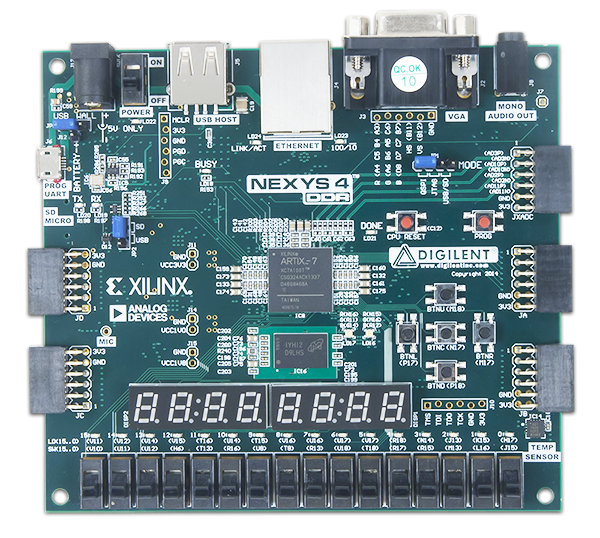What are the advantages of a FPGA?

If you don’t know what is an FPGA, then check out the blog post about FPGA. //abdurrob.org/what-is-an-fpga/
There are many advantages of using an FPGA over a CPU/GPU. FPGA is becoming popular and easier access for normal peoples.
Low Latency (Fast)
FPGA is very fast, which means that it gives the user a very high frequency. Low latency is a must if you are using Fighter Jet (Lockheed Martin design such jets like F-35) or High-frequency Algorithm trading.
https://i.kinja-img.com/gawker-media/image/upload/s–BLOludH0–/c_scale,f_auto,fl_progressive,q_80,w_800/yb7hqwdemtnin2tgfmk4.jpg
The latency needed to be as small as possible. Currently, I am using a Xilinx Nexys4 DDR board, which gives me a clock speed of 100 Mhz (Megahertz, million cycles per second). This is fast for an inexpensive board like this. The latency for this board is 10 ns compare to CPUs that are above 50 microseconds.
https://reference.digilentinc.com/reference/programmable-logic/nexys-4-ddr/start
FPGA is very inexpensive compared to ASIC. My Nexys4 DDR board with student discount are $265, where ASIC would cost me thousands. I recommend for beginners to get a CPLD (complex programmable logic device), this cost in $20s. CPLDs contains fewer logic slices than FPGA.
Input/Output Connectivity
FPGA gives direct I/O connectivity with very high bandwidth. Unlike, CPU/GPU where to connect with an Operating System (OS) and wait for the OS to give back the data to the application. FPGA has the advantage to connect the data source directly and thus gives high bandwidth.
There are many disadvantages of an FPGA as well. Let’s discuss that in another post.
What’s next on the blog?
Sign up to get my blog post regularly. Next, I will write about the disadvantage and real-life examples of an FPGA. Meanwhile, check out the book “FPGA For Dummies”. Also, check my blog “//fpgafordummy.com/”.
References
Moore, Andrew. FPGA for Dummies. John Wiley & Sons, Inc, 2017.